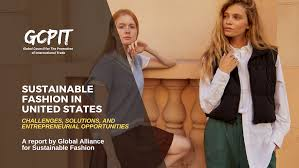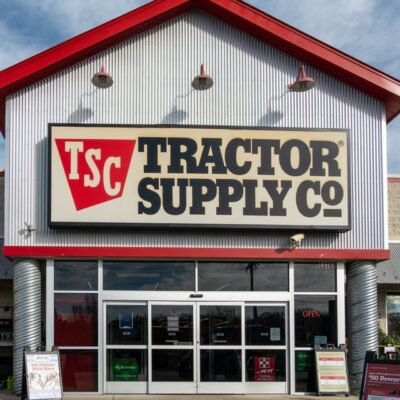The fashion industry has long been criticized for its environmental impact, from excessive water use to massive textile waste. But American fashion brands are stepping up, embracing sustainable practices to create a greener future. Consumers are demanding eco-friendly options, and brands are listening, weaving sustainability into their designs, production, and ethos. This shift isn’t just a trend—it’s a movement reshaping how we think about fashion. Let’s dive into how American brands are leading the charge, the challenges they face, and why this matters for the planet and your wardrobe.

The Push for Sustainability in Fashion
The fashion industry is one of the world’s biggest polluters. It’s responsible for about 10% of global carbon emissions and produces millions of tons of textile waste annually. Fast fashion, with its cheap, trendy clothes, has fueled overconsumption, leading to overflowing landfills and exploited workers. But American consumers are waking up. A growing number want clothes that look good and do good, pushing brands to rethink their practices.
Sustainability in fashion means using eco-friendly materials, reducing waste, ensuring fair labor, and creating durable products. American brands, from small startups to industry giants, are adopting these principles in creative ways. They’re proving that style and sustainability can go hand in hand, appealing to shoppers who care about the planet.

Leading American Brands Going Green
Several American fashion brands are setting the standard for sustainability, each with unique approaches to reducing their environmental footprint.
Patagonia, a pioneer in eco-conscious fashion, has been a leader for decades. The outdoor apparel brand uses recycled polyester, organic cotton, and regenerative farming practices to source materials. Patagonia’s “Worn Wear” program encourages customers to repair, reuse, or recycle their clothes, extending the life of each garment. The company also donates 1% of its sales to environmental causes, showing that profit and purpose can coexist.
Everlane, known for its minimalist basics, focuses on transparency. The brand shares detailed information about its factories, materials, and production costs, helping consumers make informed choices. Everlane has eliminated virgin plastic from its supply chain and uses recycled fabrics in many products, like its ReNew fleece made from recycled plastic bottles. By prioritizing quality over quantity, Everlane promotes a “buy less, choose well” mindset.
Reformation, a Los Angeles-based brand loved by celebrities like Taylor Swift, combines chic designs with sustainability. Reformation uses eco-friendly fabrics like Tencel and deadstock materials (leftover fabrics from other manufacturers) to create its dresses and tops. The brand tracks its environmental impact, sharing data on water, carbon, and waste savings for each product. Its cheeky slogan, “Being naked is the #1 most sustainable option. We’re #2,” resonates with eco-conscious shoppers.
Outerknown, founded by pro surfer Kelly Slater, prioritizes ethical production. The brand partners with B-corporations and nonprofits to ensure fair labor and sustainable materials, like organic cotton and recycled nylon. Outerknown’s blankets and jackets are made with regenerative fibers, which help restore soil health. By focusing on timeless designs, the brand encourages customers to invest in pieces that last.
Smaller brands are also making waves. ARTICLE22, a jewelry brand, crafts pieces from recycled Vietnam War-era bomb fragments, supporting artisans in Laos. SANTICLER, a women’s wear label, uses GOTS-certified cotton and low-impact dyes in limited production runs to minimize waste. These brands show that sustainability can be innovative and inclusive.

How They’re Doing It
American brands are adopting sustainable practices across their operations. Here are some key strategies:
- Eco-Friendly Materials: Brands are swapping synthetic fibers for organic cotton, hemp, linen, and recycled materials. For example, DL1961, a denim brand, uses a waterless system that recycles 98% of the water used in production, drastically cutting waste. Certifications like GOTS (Global Organic Textile Standard) ensure materials meet strict environmental and social criteria.
- Circular Fashion: The linear “make, use, dispose” model is being replaced by circular systems. Brands like Patagonia and Eileen Fisher offer take-back programs, where customers return used clothes for repair, resale, or recycling. This reduces landfill waste and promotes a cycle of reuse.
- Ethical Production: Fair labor is a cornerstone of sustainability. Brands like Bleusalt, a Meghan Markle favorite, work with small workshops that prioritize worker welfare. Transparency about supply chains, as seen with Everlane, builds trust and accountability.
- Slow Fashion: Unlike fast fashion’s rapid churn, sustainable brands focus on timeless designs and high-quality materials. Cuyana, known for its LWG-certified leather bags, encourages consumers to buy fewer, better pieces, reducing overconsumption.
- Innovation: Technology is helping brands go green. Levi’s, for instance, is scaling water-saving techniques and aiming for a 42% reduction in supply chain emissions by 2030. Some brands use AI to predict trends and avoid overproduction, while others experiment with 3D printing for on-demand manufacturing.
Challenges on the Road to Sustainability
Going sustainable isn’t easy. The higher cost of eco-friendly materials and ethical production often leads to pricier products, which can deter budget-conscious shoppers. For example, a pair of DL1961 jeans may cost more than fast-fashion alternatives, making accessibility a hurdle. Brands must balance affordability with their green commitments.
Greenwashing—when companies exaggerate or falsify their eco-credentials—is another issue. Some brands slap “sustainable” on their labels without real changes, confusing consumers. Tools like the Good on You app, which rates brands on labor, environmental, and animal welfare practices, help shoppers spot genuine efforts. Only about 19% of brands earn a “good” or “great” rating, showing there’s work to be done.
Scaling sustainable practices is also tough. Building local textile plants or retraining global supply chains takes years and significant investment. Tariffs and trade policies, like those discussed in recent news, could complicate sourcing eco-friendly materials, especially for smaller brands like LeoBella, which relies on sustainable workshops abroad.
Why This Matters
Sustainable fashion isn’t just about saving the planet—it’s about creating a better industry. By supporting brands that prioritize the environment and workers, consumers can drive change. Every purchase is a vote for the kind of world we want. Plus, sustainable clothes are often higher quality, saving money in the long run. A well-made Everlane sweater or Patagonia jacket can last years, unlike fast-fashion pieces that wear out quickly.
For American brands, sustainability is also a business opportunity. As eco-conscious Gen Z and Millennials dominate the market, brands that align with their values stand to gain loyalty. Events like the Copenhagen International Fashion Fair’s sustainable showroom during New York Fashion Week 2025 highlight American designers alongside global peers, showcasing their green innovations to buyers and press.
How You Can Get Involved
Want to support sustainable fashion? Start small. Research brands using resources like Good on You or The Good Trade’s guides. Shop secondhand, rent for special occasions, or invest in versatile pieces from brands like Cuyana or Outerknown. Care for your clothes—wash them less, repair tears, and donate or recycle when you’re done. These habits extend garment life and reduce waste.
The Future of American Fashion
American fashion brands are proving that sustainability is more than a buzzword—it’s a commitment to better practices and a healthier planet. From Patagonia’s recycled fabrics to Reformation’s transparent impact reports, these companies are redefining style. Challenges like cost and greenwashing persist, but the momentum is undeniable. As consumers, we have the power to amplify this change by choosing brands that prioritize people and the planet.
The next time you shop, consider the story behind your clothes. By supporting sustainable American brands, you’re not just updating your wardrobe—you’re helping build a greener, fairer future.
Must Read :- Top 10 Best U.S. Colleges Changing Education in 2025






